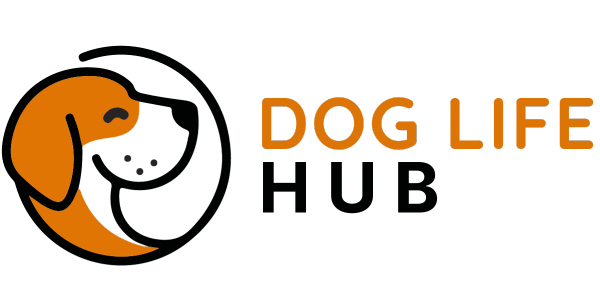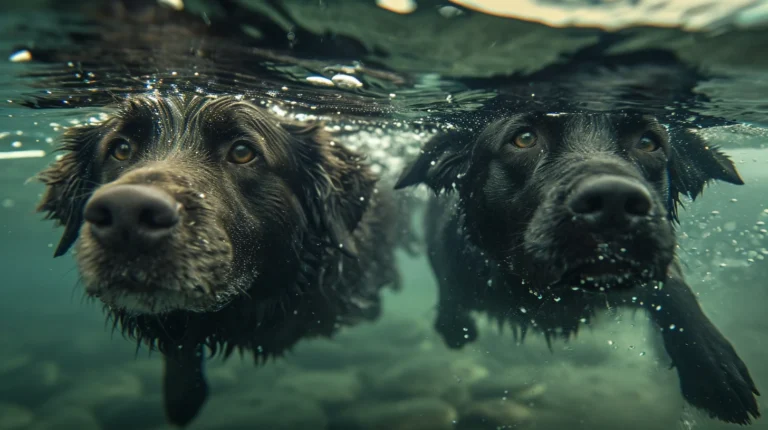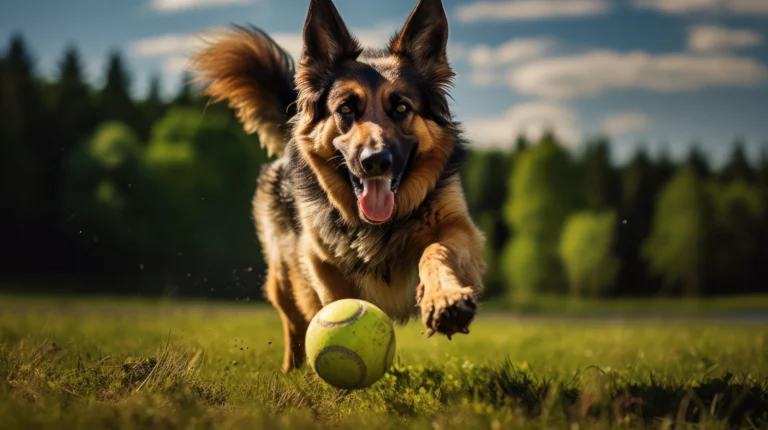How Did Dogs Evolve?
The Evolution of Dog Breeds Through History Explained
Domestic dogs, known as Canis familiaris, have a rich history that is intricately connected to human civilization. The evolution of dog breeds spans thousands of years and has resulted in the diverse and beloved canine companions we know today.
In ancient times, humans began the process of domesticating and selectively breeding dogs. This artificial selection allowed for the development of various dog breeds with distinct characteristics, sizes, and appearances. From small lap dogs to large working breeds, the evolution of dog breeds is a testament to the close relationship between humans and canines throughout history.
The evolution of dog breeds can be attributed to the domestication of grey wolves by early humans during the Stone Age. Dogs were initially used for their hunting and guarding abilities, but over time, their roles expanded to include herding, companionship, and even therapy.
Through centuries of breeding and careful selection, ancient dog breeds emerged, each with their own unique traits and purposes. From the ancient Egyptian Saluki to the powerful Ancient Greek Molossus, these historical dog breeds played significant roles in human societies and left a lasting impact on the evolution of domesticated dogs.

Key Takeaways:
- The evolution of dog breeds is a result of the domestication and selective breeding of gray wolves by early humans.
- Ancient dog breeds had specific roles in ancient societies, such as hunting, guarding, and herding.
- Through centuries of selective breeding, dogs have become specialized for various purposes and exhibit a wide variety of sizes, conformation, and pelage.
- Ancient dog breeds have contributed to the development of the modern dog breeds we know today.
- The close relationship between humans and dogs has shaped the evolution of both species throughout history.
Physical Evolution of Dog Breeds
Recent research has uncovered fascinating insights into the physical evolution of dog breeds, particularly in terms of their facial features. One notable evolutionary change is the development of what is commonly referred to as “puppy dog eyes.” Dogs have evolved new muscles around their eyes that allow them to raise their eyebrows, creating the appearance of larger, more infant-like eyes.
This evolutionary trait is believed to be a result of unconscious decisions made during the process of selective breeding. Over time, breeders have favoured dogs with this endearing facial expression, leading to its prevalence in certain breeds. It is suggested that this feature enhances dogs’ ability to communicate with humans and elicit an emotional response, ultimately deepening the bond between dogs and their human companions.
Selective breeding has played a significant role in shaping the physical attributes of different dog breeds. Breeders have focused on maintaining and enhancing specific traits, resulting in the creation of purebred lineages. These purebred dogs often conform to breed standards established by organizations such as the American Kennel Club, ensuring consistency in appearance and temperament within each breed.
| Dog Breed | Facial Feature |
|---|---|
| Golden Retriever | Puppy dog eyes |
| Pug | Short, wrinkled muzzle |
| German Shepherd | Strong, alert expression |
| Bloodhound | Droopy, wrinkled skin |
It is important to note that while selective breeding has contributed to the physical evolution of dog breeds, responsible dog ownership goes beyond appearance. Adopting dogs from shelters and rescuing those in need is an essential aspect of promoting animal welfare and ensuring the well-being of these incredible creatures.
Genetics of Dog Breeds
Understanding the genetics of dog breeds is essential for unravelling the mysteries of their evolution and domestication. Genetic analysis has provided valuable insights into the relationship between dogs and their wild ancestor, the grey wolf. It has revealed that the domestication of dogs led to a relaxation of selective forces, allowing for the selection of traits that would be disadvantageous in the wild.
The genetic variation within the domestic dog species is greater than the variation between different species in the Canidae family. This indicates the extent to which selective breeding and human intervention have shaped the genetic makeup of dog breeds. Through sequencing and mapping the dog genome, scientists have been able to trace the origins and migration of dog breeds. Interestingly, the most popular dog breeds in America are of European descent, with genomic research linking their origins to Victorian England.
The dog-wolf relationship is crucial to understanding the genetics of dog breeds. The sequencing of both dog and grey wolf genomes has provided evidence that grey wolves are the direct ancestors of domestic dogs. This research also suggests a single origination event and multiple interbreeding events, with dogs originating in Siberia and migrating to other regions.
Migration of Dog Breeds
The migration of dog breeds is a fascinating aspect of their genetic history. As humans migrated across continents, they brought their canine companions with them, leading to the spread of different breeds to new regions. For example, the Basenji breed is believed to have originated in Central Africa, while the Siberian Husky has its roots in Siberia. The genetic analysis of dog breeds provides valuable insights into their migration patterns and the diverse influences that have shaped these breeds over time.
| Key Points | Insights |
|---|---|
| Relaxation of Selective Forces | The domestication of dogs led to a relaxation of selective forces, allowing for the selection of traits that would be disadvantageous in the wild. |
| Genetic Variation | The genetic variation within the domestic dog species is greater than the variation between different species in the Canidae family, highlighting the impact of selective breeding. |
| Dog-Wolf Relationship | Genetic analysis confirms that grey wolves are the direct ancestors of domestic dogs, with a single origination event and multiple interbreeding events. |
| Migration of Dog Breeds | Humans’ migration across continents has led to the spread of different dog breeds to new regions, resulting in diverse influences on breed characteristics. |
The study of the genetics of dog breeds continues to evolve as new research techniques and technologies emerge. The sequencing and mapping of the dog genome have provided significant advancements in our understanding of the origins and genetic makeup of dogs. This knowledge not only sheds light on the fascinating history of dog breeds but also has implications for human health, as the genetic similarities between dogs and humans can offer insights into disease prevention and treatment.
The Microbiome of Dogs
Recent studies have revealed intriguing similarities between the microbiome of dogs and humans. The dog gut microbiome, in particular, bears a striking resemblance to the human microbiome, suggesting a potential connection between the two. The presence of similar genes in both dog and human microbiomes indicates a shared history and evolutionary relationship.
Microbial exchange between dogs and humans has been observed, especially in households where dogs are kept as pets. Dogs and humans living together share similarities in their skin microbiota, further supporting the notion of a microbial exchange between the two species. This research opens up exciting possibilities for understanding the human digestive system and its impact on human health, as well as the potential benefits of having dogs in the house.
| Similarities Between Dog and Human Microbiomes | Differences Between Dog and Human Microbiomes |
|---|---|
| Similar microbial species Shared metabolic pathways Comparable functional gene clusters | Different microbial diversity Distinct ratios of microbial populations Variations in specific microbial functions |
Understanding the microbiome of dogs not only sheds light on their own health and well-being but also provides insights into human health. The dog gut microbiome can serve as a model system for studying the human microbiome and its intricate interactions with various diseases. Further research into the microbiome of dogs promises to unravel more secrets about our shared evolution and pave the way for potential therapeutic interventions.
Unravelling the History of Dog Breeds
Understanding the origins of domesticated dogs is a complex puzzle that researchers are continually piecing together. DNA analysis has played a crucial role in unravelling the history of dog breeds and shedding light on their early domestication. By examining the genetic material of modern dogs and ancient canine remains, scientists have gained valuable insights into how dogs evolved from their wolf ancestors.
Early domestication of dogs is believed to have occurred as far back as 130,000 years ago. This process likely involved wolves exploiting a niche within human society and forming mutually beneficial relationships with humans. Over time, dogs played vital roles in various human activities, such as hunting, herding, and companionship. As humans settled in different regions of the world, dogs accompanied them, leading to the interbreeding of different populations and the development of diverse breeds.
The ongoing Dog Genome Project is a major undertaking aimed at mapping the entire canine genome. This project has already yielded significant findings regarding the genetic makeup of dogs and their relationship with humans. It allows scientists to trace the ancestry of different dog breeds, uncover genetic variations associated with specific traits, and explore potential links to diseases.
The dog genome project holds the promise of further unravelling the complex tapestry of dog evolution. By delving deeper into the genetic history of dogs, researchers can gain a deeper understanding of the origins of domesticated dogs, the interplay of selective breeding and natural adaptation, and the enduring bond between humans and their loyal canine companions.
Conclusion
The evolution of dog breeds is a captivating testament to the power of artificial selection. Over centuries, humans have actively shaped and bred dogs to fulfil specific roles, resulting in the vast array of breeds we see today. From the herding instincts of Border Collies to the companionship of Golden Retrievers, each breed has its unique characteristics that make them special.
In order to maintain the integrity of each breed, various breed standards have been established. These standards outline the ideal traits and physical characteristics that define each breed and guide breeders in their selection process. Breed standards ensure that the future generations of dogs retain their distinctive features and maintain the breed’s overall conformation.
However, responsible dog ownership goes beyond breed standards. It involves considering adoption from shelters and rescuing dogs in need. By providing a loving home to a rescue dog, you not only contribute to their well-being but also help reduce the number of dogs in shelters. Responsible ownership also entails providing proper training, exercise, and veterinary care to ensure the overall health and happiness of your furry companion.
By understanding the evolution and artificial selection of dog breeds, we gain a deeper appreciation for our canine companions. Dogs have not only enriched our lives with their unwavering loyalty and companionship, but they have also provided invaluable support in various roles such as working, therapy, and assistance animals. Embracing responsible dog ownership allows us to reciprocate the love and devotion they give us every day.
FAQ
What is the origin of domestic dogs?
Domestic dogs are descendants of the grey wolf, and their evolution can be attributed to the domestication of grey wolves by early humans during the Stone Age.
How many dog breeds are recognized by the American Kennel Club?
The American Kennel Club recognizes 193 out of the 340+ dog breeds worldwide.
How have dogs physically evolved?
Dogs have evolved new muscles around the eye that allow them to raise their eyebrows, making their eyes appear larger and more infant-like, which is believed to be a result of unconscious decisions during dog breeding.
What is the genetic relationship between dogs and grey wolves?
Genetic analysis has revealed that grey wolves are the direct ancestors of domestic dogs, and the genetic variation within the domestic dog species is greater than the variation between different species in the Canidae family.
How does the microbiome of dogs compare to that of humans?
Recent studies have found that the microbiome of dogs is most similar to the human microbiome compared to other animals, and the presence of dogs in the house promotes microbial exchange between dogs and humans.
When and where did the domestication of the first dog occur?
The exact timing and location of the domestication of the first dog are still subjects of speculation, but DNA analysis suggests that the transformation of wolves into dogs may have occurred as early as 130,000 years ago.
Thanks for reading! Please remember to visit our shop before you leave. We donate 10% of profits to UK based dog charities and shelters.









